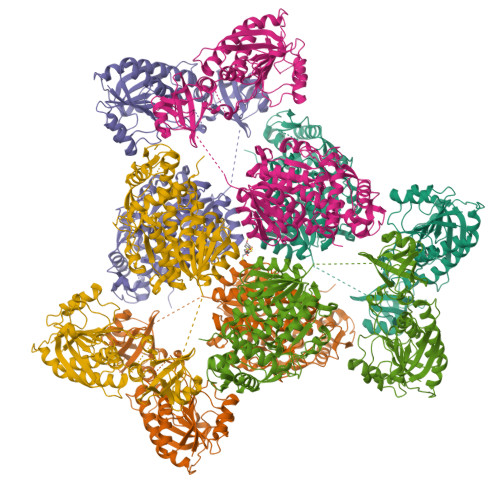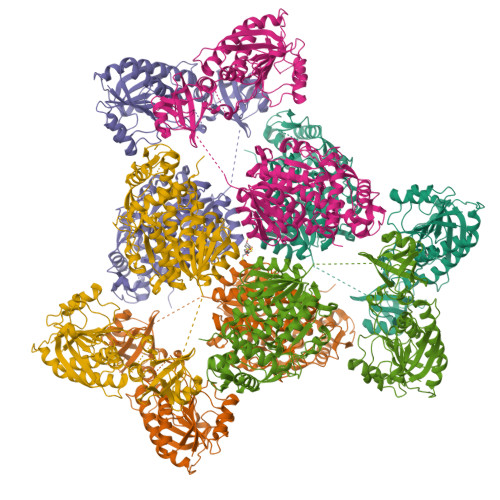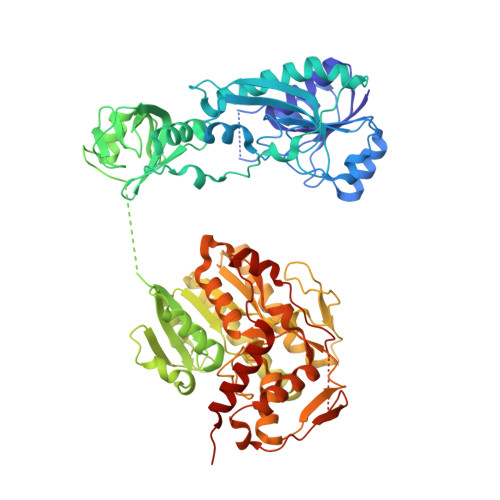The structure of apo ArnA features an unexpected central binding pocket and provides an explanation for enzymatic cooperativity.
Fischer, U., Hertlein, S., Grimm, C.(2015) Acta Crystallogr D Biol Crystallogr 71: 687-696
- PubMed: 25760615
- DOI: https://doi.org/10.1107/S1399004714026686
- Primary Citation of Related Structures:
4WKG - PubMed Abstract:
The bacterial protein ArnA is an essential enzyme in the pathway leading to the modification of lipid A with the pentose sugar 4-amino-4-deoxy-L-arabinose. This modification confers resistance to polymyxins, which are antibiotics that are used as a last resort to treat infections with multiple drug-resistant Gram-negative bacteria. ArnA contains two domains with distinct catalytic functions: a dehydrogenase domain and a transformylase domain. The protein forms homohexamers organized as a dimer of trimers. Here, the crystal structure of apo ArnA is presented and compared with its ATP- and UDP-glucuronic acid-bound counterparts. The comparison reveals major structural rearrangements in the dehydrogenase domain that lead to the formation of a previously unobserved binding pocket at the centre of each ArnA trimer in its apo state. In the crystal structure, this pocket is occupied by a DTT molecule. It is shown that formation of the pocket is linked to a cascade of structural rearrangements that emerge from the NAD(+)-binding site. Based on these findings, a small effector molecule is postulated that binds to the central pocket and modulates the catalytic properties of ArnA. Furthermore, the discovered conformational changes provide a mechanistic explanation for the strong cooperative effect recently reported for the ArnA dehydrogenase function.
Organizational Affiliation:
Department of Biochemistry, Biocenter of the University of Würzburg, Am Hubland, 97074 Würzburg, Germany.


















